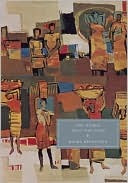 |
| Richard Carston, train wreck (and Esther, not a train wreck) |
I'm more than halfway through the book, and there have been all kinds of plot developments -- Richard Carston is getting deeper and deeper into trouble, and a sleazy lawyer named Vholes has gotten his hooks into him, courtesy of Mr. Skimpole. What a pair! Richard is such a train wreck!! Richard refuses to give up hope that his cut of the Jarndyce fortune is just around the corner, despite the fact that generations of people have lived and died without seeing a penny, including a distant relative that blew his brains out in despair over it.
I've got to hand it to Dickens, once again for creating such perfectly named characters. Vholes -- is there any doubt that this guy is bad news? Is he a vulture, a vampire, or a rodent (or should I say a rhodent?)?? This does not bode well for Richard, or for Ada, whose fortune is tied with his, especially now that she has pledged her undying love to him. Girl needs a sassy gay friend, like, right now!!
Meanwhile, things are not looking good for either Sargent George, who is also in trouble courtesy of Tulkinghorn and Smallweed. Like Richard, they're putting the screws on him financially because they want proof of the late Captain Hawdon's writing. And in related news, Mr. Guppy has managed to trace Esther's family to Lady Dedlock, and Tulkinghorn knows something is up.
 |
| Esther Summerson, our heroine |
Esther is actually starting to grow on me as a character. She's not as sickly sweet as I imagined before. She's really nice to Caddy Turveydrop (nee Jellyby) and to Charlie, her new maid. Though, as I've mentioned, I really don't see why she adores Ada so much. Girl needs some serious character development.
One thing about Esther and Ada has really occurred to me -- I think the real love story in this book might be Esther and Ada. I don't mean in a sexual way -- I once read that the real love story in Sense and Sensibility is between the two Dashwood sisters (though their characters are far better defined, in my humble opinion). It just reminds me of that, how they adore each other so much. The reader doesn't really know anything about Ada's history, just that she's also an orphan and a ward of the court regarding Jarndyce. Maybe the reason she and Esther are so close is that they're both orphans and this is the closest they've ever had to a loving family, like sisters. Lord knows Esther's godmother treated her like dirt her entire life -- it seems like living at Bleak House has been the happiest her life has ever been, so that's sort of understandable.
Anyway -- the story is really getting good, and some major plot developments are about to happen. Stay tuned!!

















